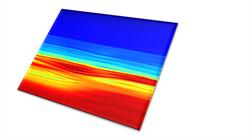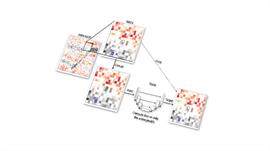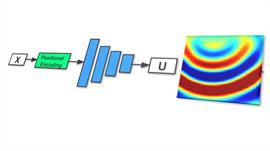Research
The Consortium aims to deliver the most effective solutions to waveform processing, imaging, and inversion challenges across multiple scales. During the first phase of the DeepWave consortium will focus on the following research directions to tackle the below mentioned problems.
 ML-assisted subsurface characterization and monitoring
ML-assisted subsurface characterization and monitoring
Classical inversion algorithms, whether post-stack, pre-stack, or waveform based will be complemented with machine learning components. The learning process will be mostly aimed at bridging the resolution gap between well information and seismic data, inverting complex non-linear relationships (e.g., rock physics models), and providing informative priors towards robust uncertainty quantification.
Closing the gap between training and testing data

Motivated by the challenges faced by our industry in the application machine learning models trained on synthetic data to field datasets, this focus will investigate novel developments in the deep learning community within the umbrella of the so-called self-supervised learning. Techniques such as blind-spot networks, Bidirectional Encoder Representations from Transformers (BERT), representation and contrastive learning will be exploited in an attempt to leverage the capabilities of neural networks in the presence of small labelled dataset (or even when labels are not available).
Physics-driven machine learning for geophysical modelling and inversion
Various scientific disciplines have been revolutionized by the introduction of physics-informed neural networks (PINNs) given their ability to model complex physical processes and overcome some of the limitations of classical numerical solvers (e.g., finite-difference). We plan to develop the next-generation of modelling tools in the geophysical arena as well as to exploit the properties of PINNs, and other variations of PINNs, for other seismic processing tasks that can be explained by an underlying partial-differential equation.
By-products of the AI revolution
The AI revolution has taken the entire scientific community by storm. Whilst most of the recent developments in the applied math and computer science communities have targeted deep learning, we believe that their value goes beyond the originally targeted applications. We plan to exploit algorithmic improvements in stochastic optimization algorithms as well as hardware and software advances in low (and mixed) precision floating-point arithmetic for geophysical applications at large.
